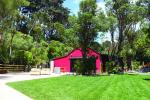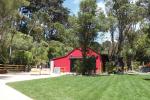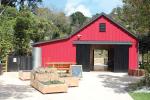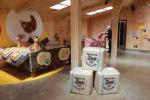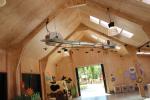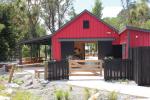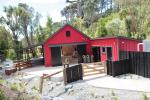Meet the locals
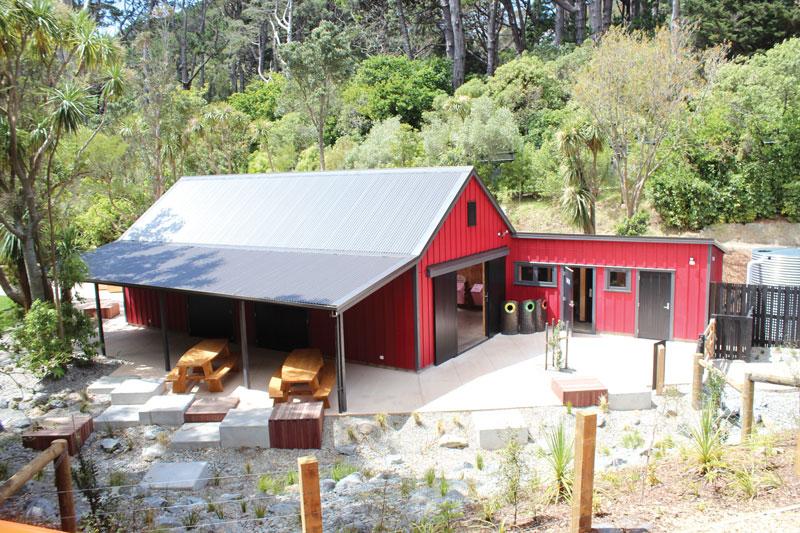
Meet the Locals He Tuku Aroha precinct, Wellington Zoo
As part of its redevelopment and rejuvenation, Wellington Zoo has created a precinct that it describes as “a love story to New Zealand”.
Meet the Locals He Tuku Aroha occupies 7000sq m – more than a fifth of the zoo’s footprint – and takes visitors through a series of zones simulating a journey from the sea to the mountains with stops along the way at farmland and native forest settings.
The whole experience is designed to allow visitors to get up close and personal with an array of indigenous and introduced species including the likes of blue penguins, eels, lambs, pigs, free range chickens, and even kea.
At a cost of $5.9 million, the project was designed by innovative architecture and landscaping firm Isthmus and took 15 months to complete but was the subject of many years of planning. Hawkins Infrastructure was the main contractor on the job.
Interactivity is a key element of the precinct, which has features such as giant gumboot play structures and a secret ‘blow hole’ that blasts unsuspecting visitors with water.
Visitors begin by crossing into Penguin Point, a representation of our coastal landscape featuring recycled wharf timbers, boat houses and rocky landscaping with native planting that is home to the Little Blue Penguin.
Then it is on to Pohutukawa Farm, which celebrates our history of agriculture and what farming means today. There are community vegetable gardens, bees, kune kune pigs, sheep and eels as well as play activities.
The cornerstone of Pohutukawa Farm is the barn, which was supplied by Pukekohe-based Customkit Buildings.
Brought into the ‘neighbourhood’ by Isthmus, Customkit Building’s natural abilities helped make the centrepiece building feel right at home in the overall environment.
Isthmus principal landscape architect Dan Males says Customkit Buildings’ style was perfect in creating a domain where visitors could spend time learning more about the each individual species.
“Their barn is the focus for a key interactive area called the Pohutukawa Farm,” he says “The Zoo was keen to have a timber-framed building that matched a rural/farm aesthetic reminiscent of what you may find in the Wairarapa for example,” says Dan of the bright red barn that has a classic COLORSTEEL® corrugate roof in ‘Ironsand’.
Dan says, “The result is understated; the building is nestled into the landscape, creating an environment that doesn’t feel as if it’s imposed upon the land - rather part of it.”
Customkit Buildings’ managing director Michael Anselmi says he’s proud to be part of any project that showcases the best of New Zealand and that also helps educate people about their environment.
“Wellington Zoo is to be congratulated on creating such an innovative and inspiring natural experience,” says Michael. “Selecting Isthmus as their design and building partner was also a stroke of genius. Both New Zealand and international visitors will learn a great deal about this country and, in the process, feel right at home.”
Michael adds, “In some ways this is another ‘feather’ in our environmental protection ‘cap’ that complements our support of the Wingspan Bird of Prey Centre in Rotorua. Anything that helps New Zealanders appreciate the landscape, and lifestyle, that we have is important.”
As visitors leave the farm, they enter a native bush zone with an interactive conservation display. The precinct culminates in a kea enclosure that has a path winding through alpine rocks, and then links through to the area outside the zoo’s tiger enclosure.
Dan Males says while redeveloping the area, they also tried to retain as much of the existing vegetation and infrastructure as possible.
He says, “The precinct is built within a sheltered valley within the zoo grounds that was once home to a number of aviaries and the old nocturnal house. The Pohutukawa Barn, and wider path network/animal enclosures, are all positioned to provide maximum retention of existing vegetation and accessible paths for visitors. The solution fulfils the desire for the area to feel remote and part of the wider town belt landscape.”
Hawkins Infrastructure project manager Gordon Williamson says the job posed a variety of challenges.
“The requirement for numerous types of engineering techniques made it an interesting project for the Hawkins Infrastructure project team to deliver. Works included reinforced concrete beams and slabs, sprayed concrete, coloured concrete, grit blasting, piling, falsework design and installation of cable stay bridge construction, foul and surface water drainage, timber frame and truss construction, cladding, plumbing installation, electrical installation, coatings and structural steel erection.”
Gordon says the creation of the precinct was a transformational project for the zoo, finalising a 10-year journey culminating in the creation of the interactive environment.
“As part of this highly collaborative journey and having worked on a number of previous projects at Wellington Zoo, Hawkins has developed a strong relationship with the zoo,” he says. “We’re proud of what has been achieved together for the greater benefit and enjoyment of the wider Wellington community.”
.

